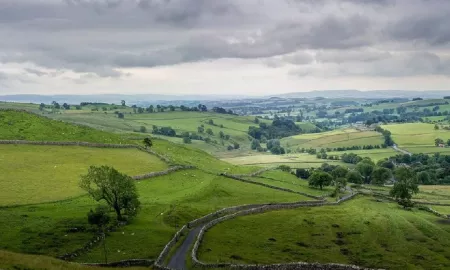Soakaways are used to collect surface water runoff allowing for its efficient infiltration into the adjacent soil.

Here, Ryan Hobson gives a brief overview of soakaway testing and the test methods used to determine whether the soil conditions are suitable for soakaway drainage.
What is a Soakaway?
A soakaway is an effective method of storing excess water and controlling the infiltration into the adjacent soil.
There are two main types of soakaway, a traditional soakaway, and a borehole soakaway. Traditional soakaways collect surface water in one place and allow it to drain away in a controlled manner into the surrounding soil. They are used in areas where the surface water cannot be disposed of into existing watercourses or sewers. In areas where impermeable soil overlies the permeable strata, the soakage needs to take place at depth. A borehole soakaway is used to transfer the water into the ground via a deeply bored pipe from a sealed chamber.
According to BRE Digest 365 ‘soakaway design,’ a soakaway must discharge its stored water sufficiently quickly to provide the necessary capacity to receive run-off from a subsequent storm. The time taken for discharge depends on the soakaway shape and size and the surrounding soil’s infiltration characteristics. To ascertain the most appropriate type of soakaway, a soakaway test should be carried out before installation to assess the infiltration rate into the ground.
Soakage Tests
Soakage or permeability tests determine the soil infiltration rate and the drainage capacity of the soils or the rate of permeability. There are several methods used to determine whether soil conditions are suitable for soakaway drainage and testing is carried out in accordance with BRE Digest 365.
Soakaway testing to BRE Digest 365 consists of excavating a trial pit of sufficient size to represent a section of the design soakaway. The pit will then be filled several times in quick succession while monitoring the rate of seepage. This replicates soil moisture conditions typical of the site when the soakaway becomes operational. The infiltration rate is then used to aid the calculation of the required size of the final soakaway.
SOCOTEC can undertake soakaway tests as part of a suite of permeability tests, including variable (rising and falling) head test, constant head test, packer (water pressure) test – used primarily for rock and pumping test.
SOCOTEC will provide all necessary equipment to complete soakaway testing including water bowser, licensed standpipe, and water pump. For further information on our full range of capabilities, please contact us.
Want to find out more about SOCOTEC's environment and safety services?

You might also like







Add new comment